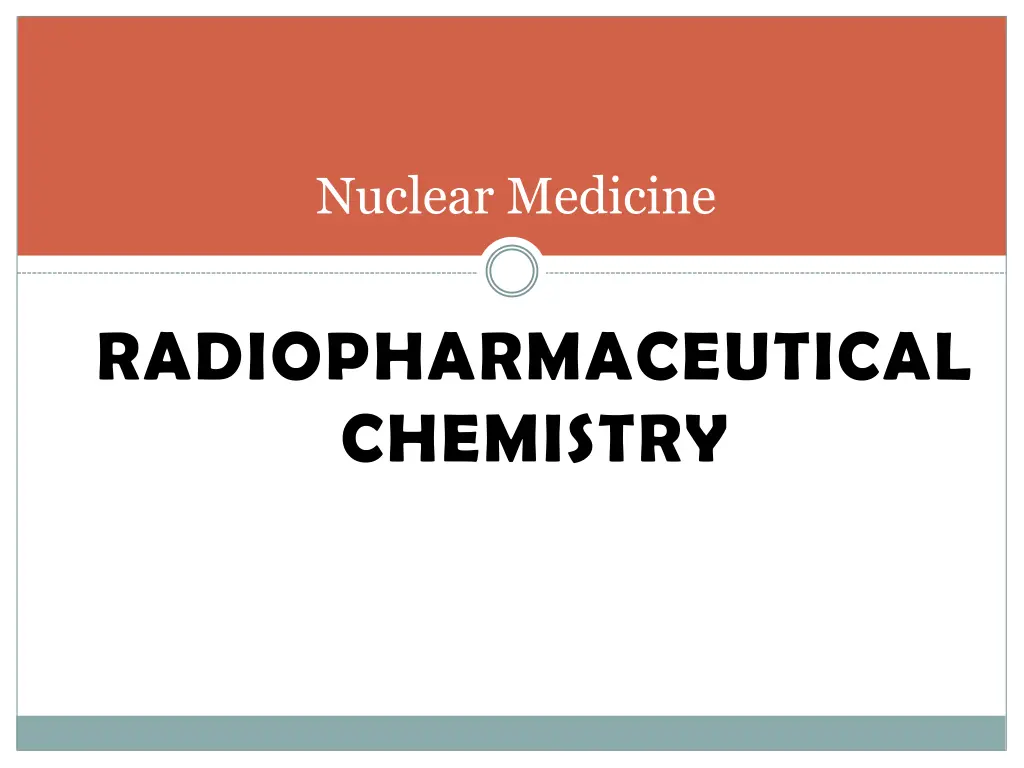
Understanding Ionizing Radiation and Radioactive Elements
Explore the world of nuclear medicine and radiopharmaceutical chemistry, learning about alpha, beta, and photon radiation types, common emitters like Radon-222 and Polonium-210, as well as natural radioactivity products and induced nuclear reactions. Discover how different types of ionizing radiation interact with materials and the environment, providing insights into the properties and behaviors of alpha particles, beta particles, and gamma rays.
Download Presentation

Please find below an Image/Link to download the presentation.
The content on the website is provided AS IS for your information and personal use only. It may not be sold, licensed, or shared on other websites without obtaining consent from the author. If you encounter any issues during the download, it is possible that the publisher has removed the file from their server.
You are allowed to download the files provided on this website for personal or commercial use, subject to the condition that they are used lawfully. All files are the property of their respective owners.
The content on the website is provided AS IS for your information and personal use only. It may not be sold, licensed, or shared on other websites without obtaining consent from the author.
E N D
Presentation Transcript
Nuclear Medicine RADIOPHARMACEUTICAL CHEMISTRY
An alpha particle consists of two protons and two neutrons Common alpha-particle emitters Radon-222 gas in the environment Uranium-234 and -238) in the environment Polonium-210 in tobacco
Radiation Types - Beta A beta particle is a charged electron Has the size and weight of an electron Can be positively or negatively charged Penetration in materials At low energies, a beta particle is not very penetrating stopped by the outer layer of skin or a piece of paper At higher energies, a beta particle may penetrate to the live layer of skin Common beta-particle emitters Tritium (hydrogen-3) in the environment Carbon (14) in the environment Phosphorus (32) used in research and medicine
Radiation Types - Photon A photon is an x or gamma ray Has no weight Has no charge Penetration in materials At low energies, a photon can be stopped by a very thin (almost flexible) layer of lead or several centimeters of tissue At higher energies, inches of lead might be necessary to stop a photon and they can pass right through a human Common photon emitters Cesium (137) Technetium (99m) used in medicine Iodine (131) used in medicine
Types of Ionizing Radiation Alpha Particles Stopped by a sheet of paper Radiation Source Beta Particles Stopped by a layer of clothing or less than an inch of a substance (e.g. plastic) Gamma Rays Stopped by inches to feet of concrete or less than an inch of lead
Products of Natural Radioactivity Particle* Symbol 4 2 0 -1 0 Charge Mass Number Identity 2+ 4 Helium Alpha nucleus Beta Gamma light 1- 0 Electron 0 0 Proton of
Clinical Uses Therapeutically ROUTE OF ADMINISTRATIONS: TELE THERAPY IMPLANTATION BY WIRE OR CAPSULE D I A G N O S T I C A L L Y R O U T E O F A D M I N I S T R A T I O N S : ORALLY PARENTERAL(IV) INHALE
An image of a thyroid gland obtained through the use of radioactive iodine.
